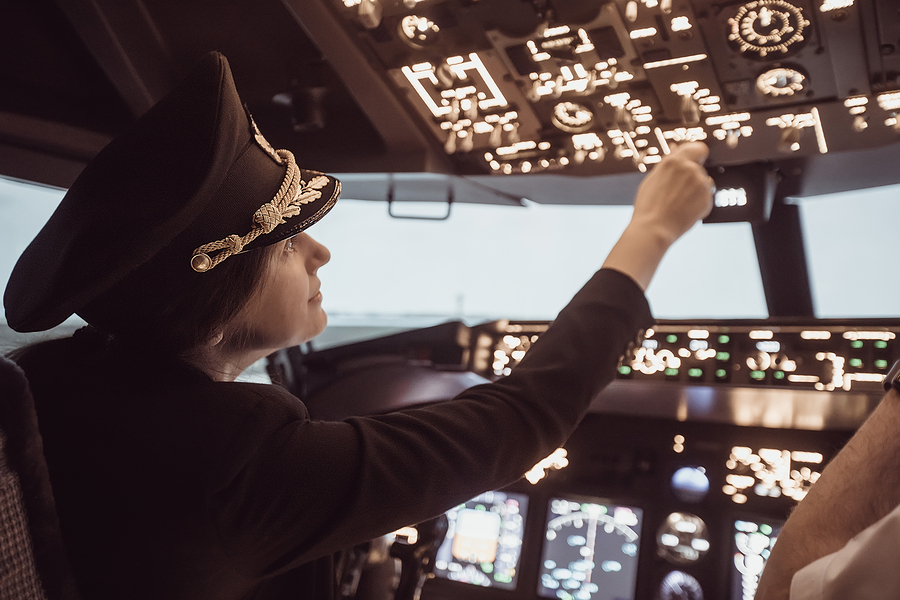On March 8, the date for celebrating International Women’s Day is not a coincidence but rather a tribute to Raymonde de la Roche, the first woman in the world to have obtained her pilot’s licence in 1910. Today’s women can in turn follow a slipstream facilitating access for all those women who dream of taking the controls of an aircraft.
Underrepresentation with variable geometry
The number of women airline pilots fluctuates greatly, depending on the airline company, the country or even the continent. In Asia, while the percentage of women occupying this position is close to 0%, India is an exception with 600 women airline pilots out of 5,050 pilots in the country, close to 12%. This is a nice performance, equalled (in percentage only!) by Iceland. In 2015 this ratio was 5.4% for the Air Pilots Association – gathering pilots from Canada and the United States – and 5.7% for British Airways which, a few years ago, had 200 women among its 3,500 pilots. In this context, there is no doubt that 100% female crews are exceedingly rare (the first was Air Transat in 2011) and relate more to a marketing operation, as evidenced by a press release from Air Canada about a 100% female flight for Women’s Day in March 2017.
A strong personality to overcome difficulties
Often among women airline pilots, the desire to practise this profession has been with them since early childhood. This real passion, which is transformed into courage and tenacity over time, lets them achieve their goals and take a place in this world of men. Nevertheless, the path is fraught with difficulties, stemming from stereotypes, biases or prejudices. It begins in training, when some instructors can be distrustful and more demanding of students, with the risk of seeing their confidence take a hit. Once they graduate with their diploma, women pilots know that they are not yet at the end of their struggle. Few of them will not have to confront the perplexed looks from some passengars, receive some disparaging comments from a Chief Pilot, or have to deal in the cockpit with a former helicopter or bush pilot who is fiercely opposed to obeying the orders of a female Chief Pilot.
Stronger together
Very soon aware of the roles they had to play, the first female airline pilots began to organize together in associations, with the “99” for Americans (1936), the “BWPA” for the British (1955) and the Association française des femmes pilotes (1971) in France. The goal is to maintain the memory of exceptional women, such as the first to connect England with Australia (Amy Johnson) or cross the Atlantic (Amelia Earhart); to valuing today’s women who achieve impressive feats (Anny Divya – aged 30 – the first Indian Chief Pilot of a Boeing 777; Maria Fedorova, the youngest civilian air transport pilot in Russia); to raising interest among young girls by creating national and international events such as World Airwoman’s Week or by offering scholarships to those who wish to develop in the aviation field.
For the airline pilot’s profession to be more easily open to women, they must not raise barriers to themselves, but rather maintain confidence in themselves by betting – why not – on their sensitivity – this form of intelligence essential to this position where human relations, contrary to what is generally thought, represents 50% of the profession.
